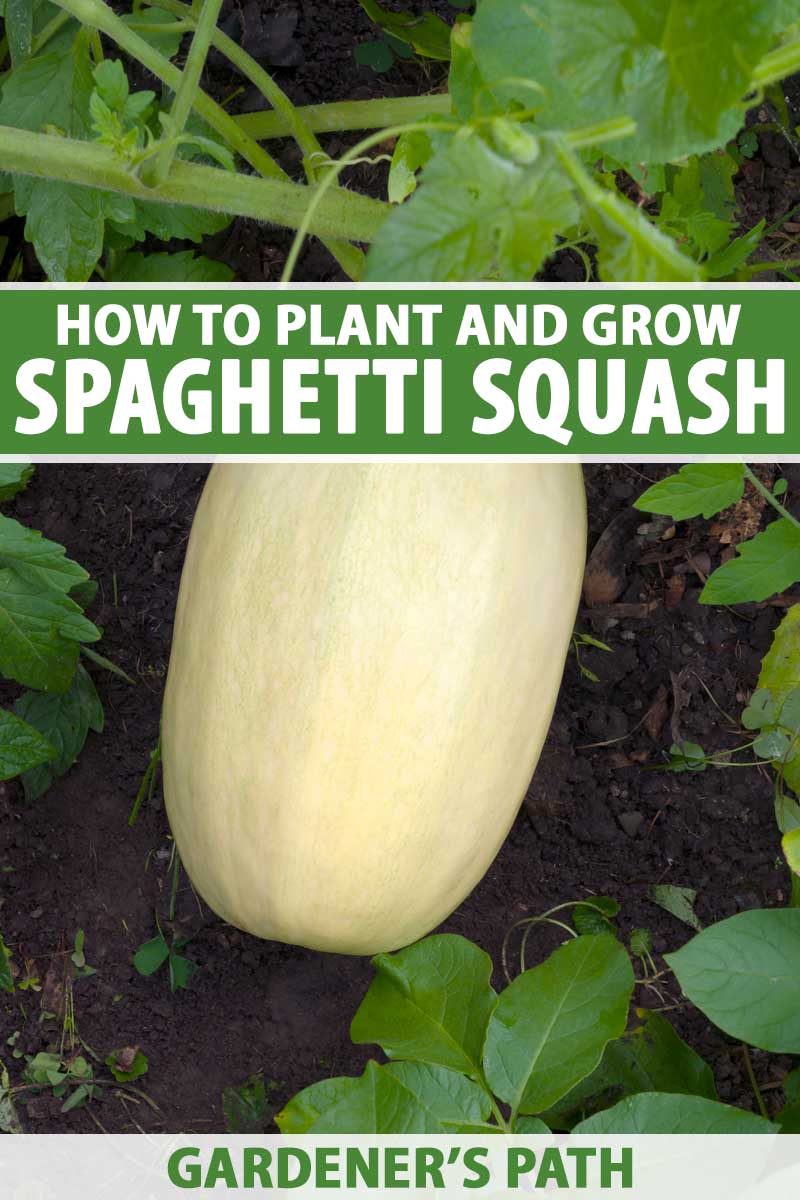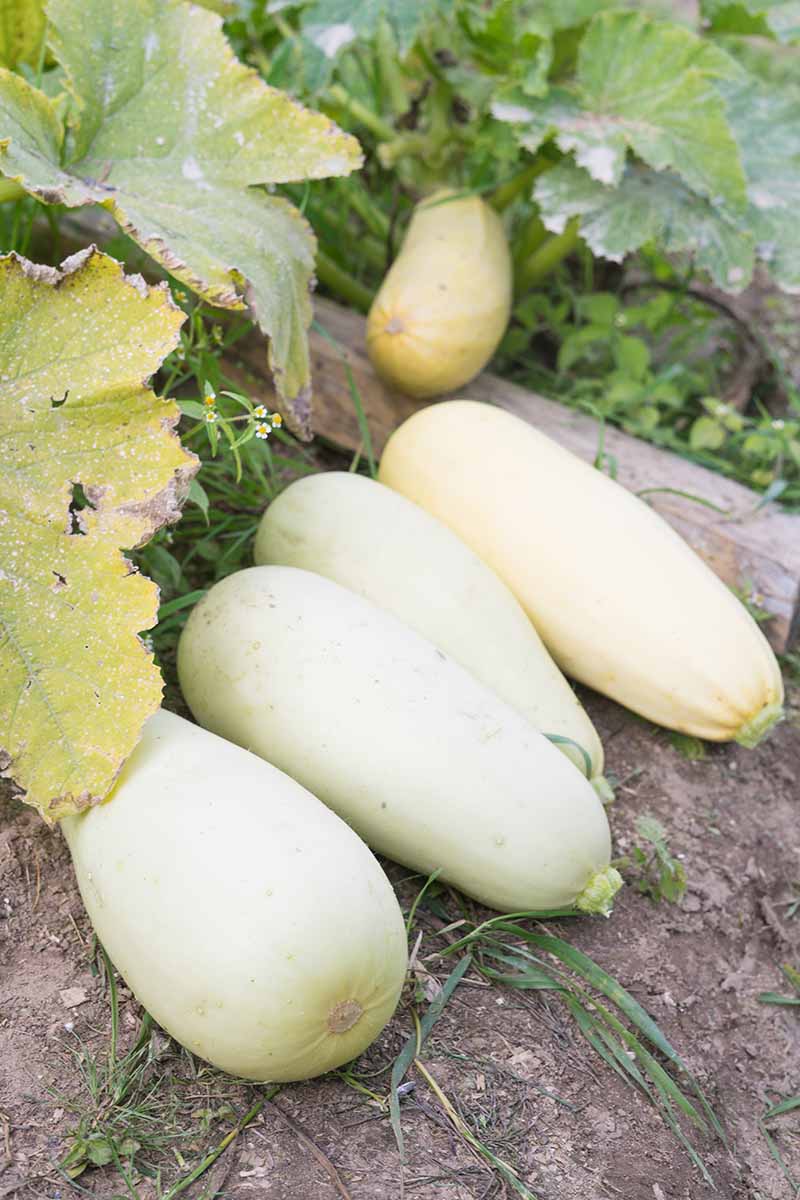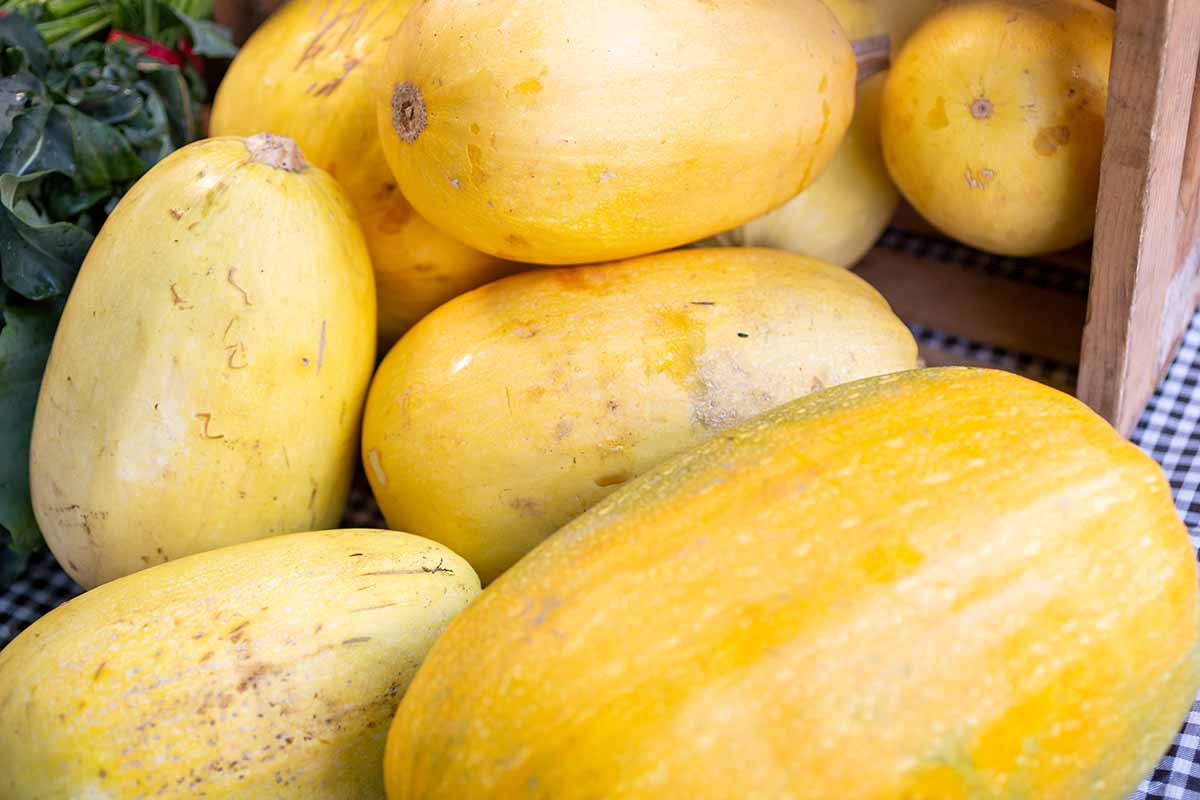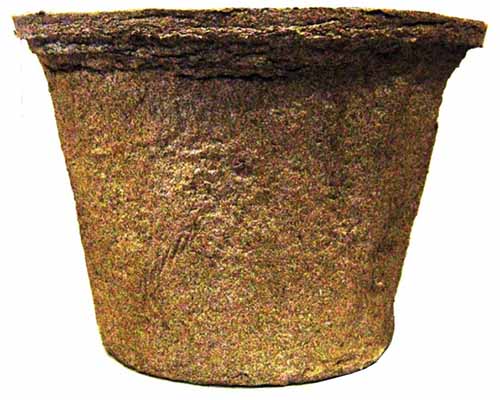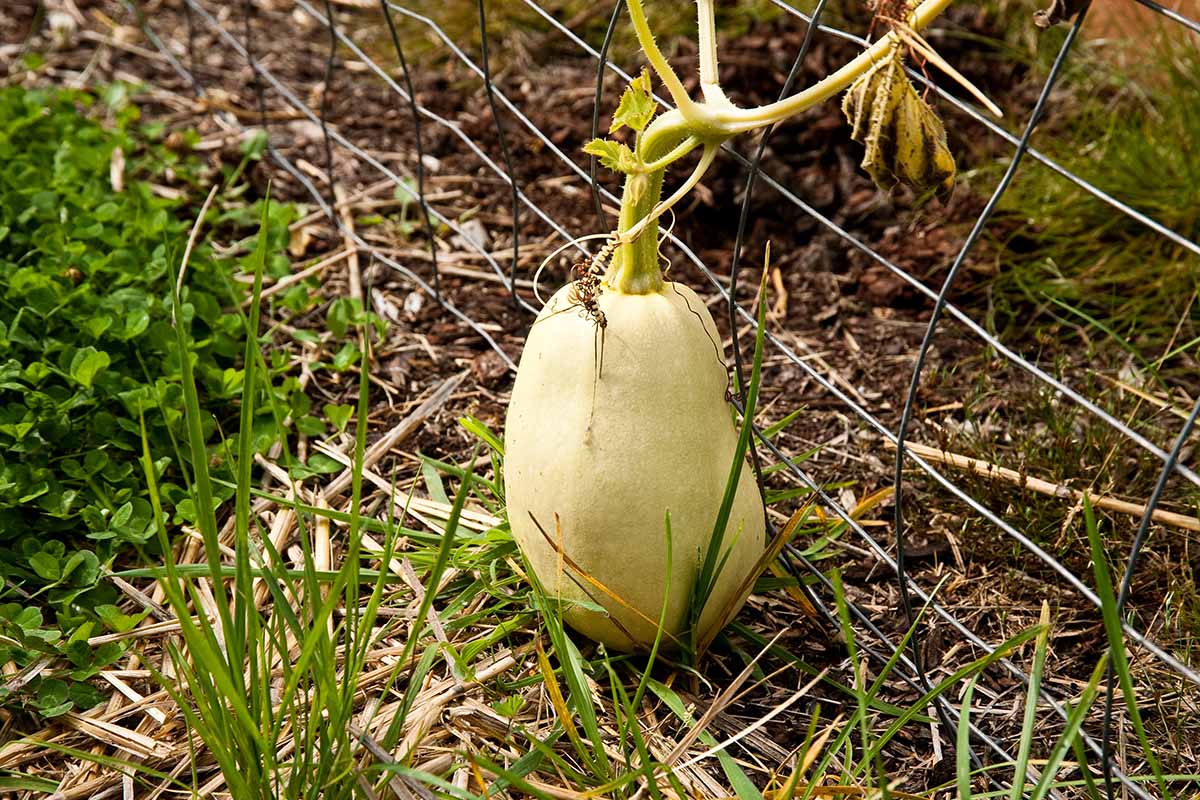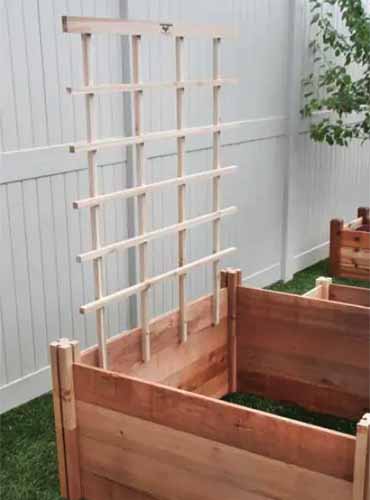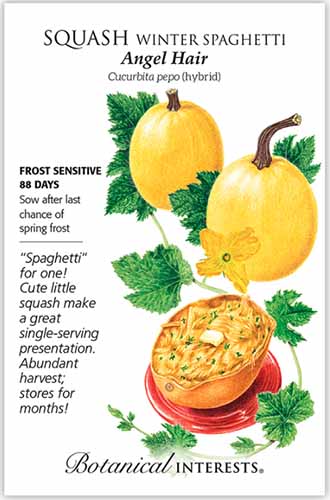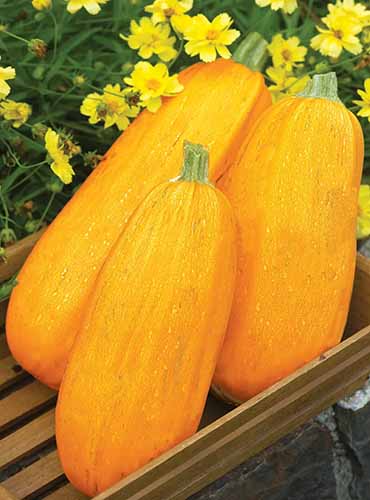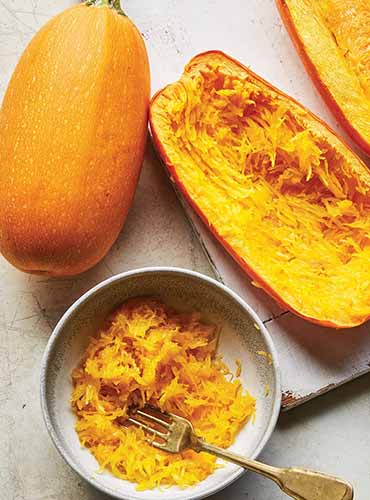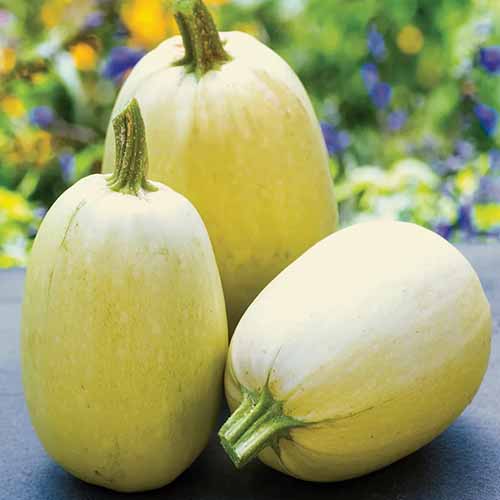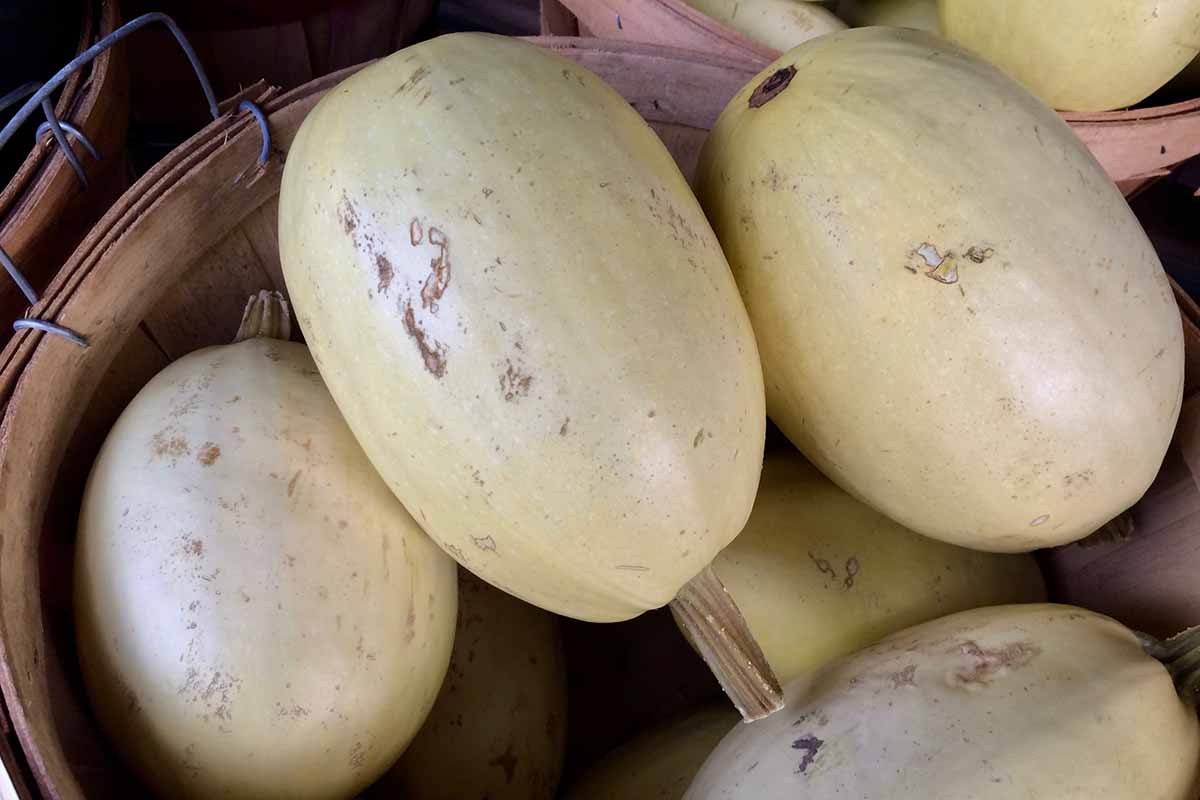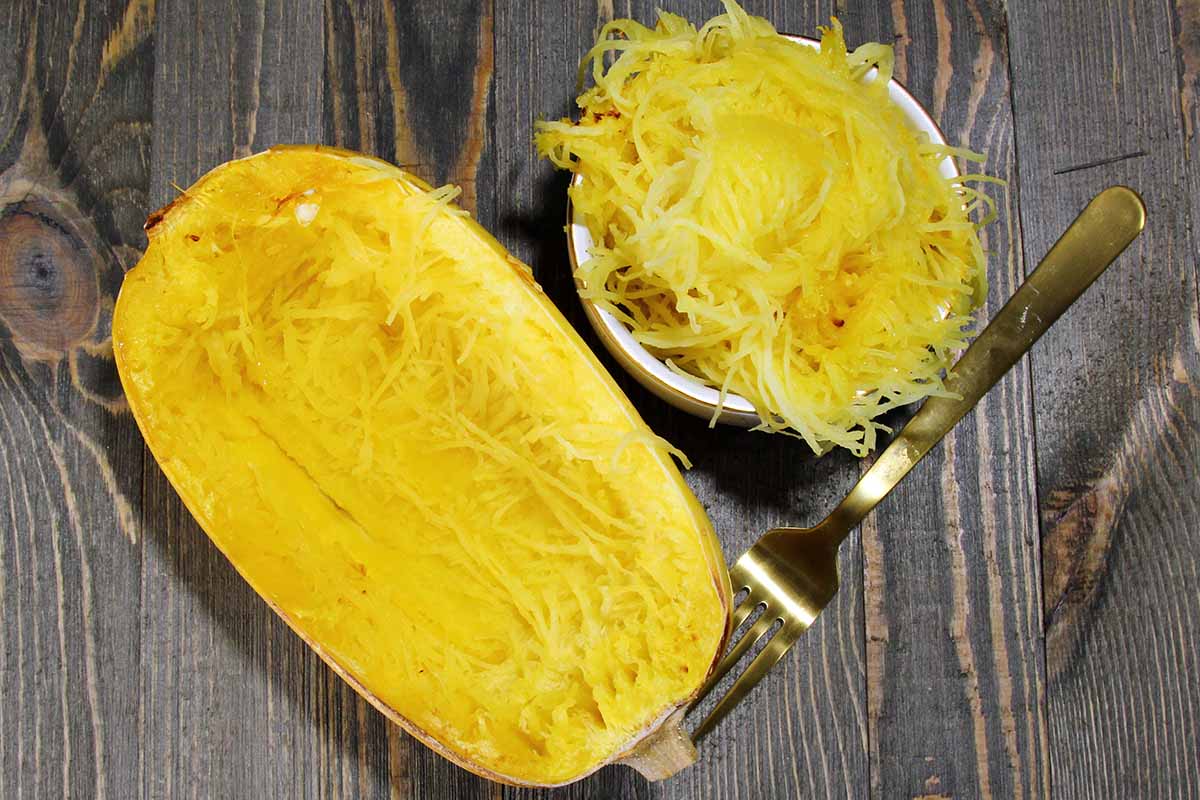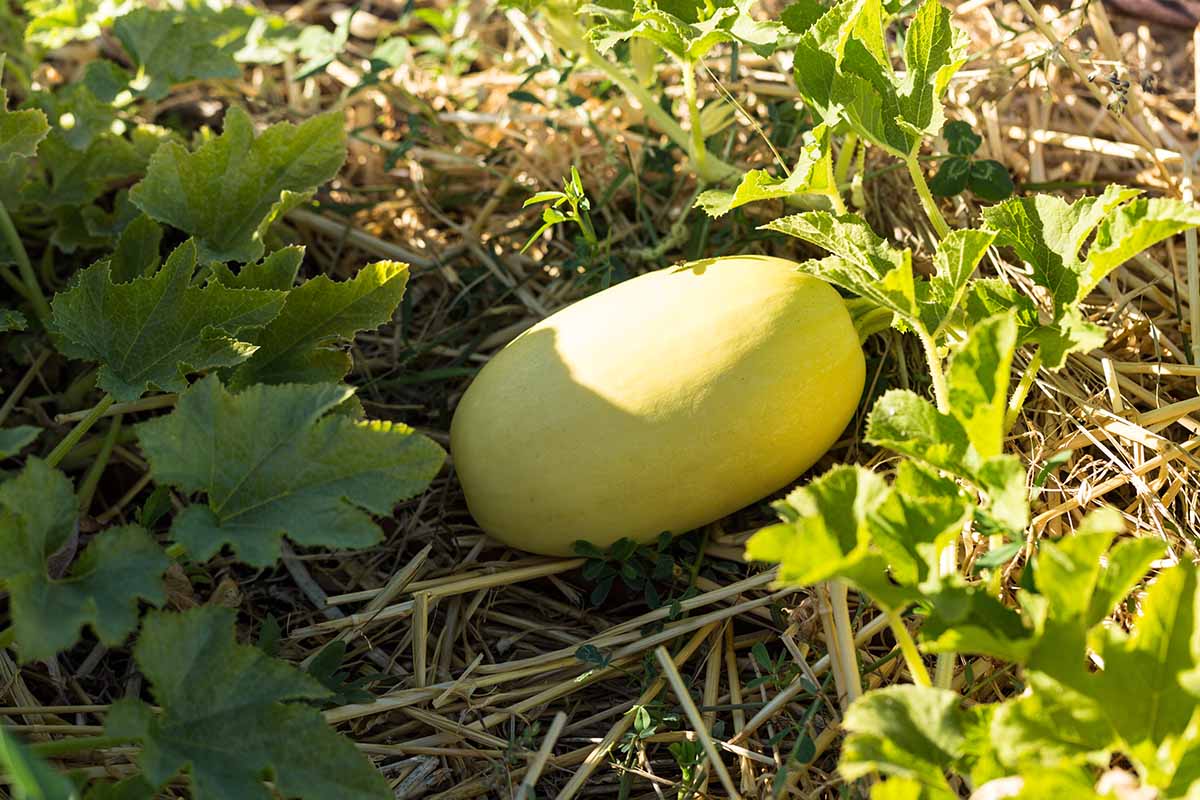The flesh of the fruit looks a lot like stringy pasta and it is regarded as a healthy and gluten-free alternative to pasta made with wheat. We link to vendors to help you find relevant products. If you buy from one of our links, we may earn a commission. Despite the name “winter squash,” spaghetti squash is typically harvested in mid- to late summer, though in some areas it may be harvested in early winter. Unlike types of summer squash such as zucchini, which have a thinner rind and smaller seeds, winter varieties can be stored over a long period. The name “winter squash” actually denotes this, since these fruits can be stored long enough to eat through the winter. Ready to grow your own at home? Here’s what’s ahead:
Cultivation and History
With the recent rise in paleo and Whole 30 diets, spaghetti squash came to the spotlight as a healthy and gluten-free alternative to traditional pasta. While most types of squash are native to North, South, and Central America, they also happily cross-pollinate, and new varieties are developed regularly. It’s believed that spaghetti squash was originally bred in Manchuria, an area that comprises parts of Russia and China today. Regardless of where it originally came from, it’s a low-maintenance plant that gardeners can easily cultivate at home. Like other squash, the most challenging part of growing them is their unruly vines. While they can be trained to grow vertically, the vines naturally spread out. Their flowers are large and yellow to orange in color. These are also edible and can be added to various recipes. Their vibrant yellow hue provides a nice pop of color for garnishing dishes or adding to salads. And I enjoy using them to decorate breads, like focaccia. The fruit itself is seven to 10 inches long and may be white, yellow, or orange. The fruit has a thick, hard skin with soft, stringy flesh that resembles pasta. While they can weigh up to eight pounds, most are around two or three pounds.
Propagation
In Zones 7 through 11 seeds can easily be sown directly in the ground. In colder areas, it is best to start the plants indoors and transplant them outside to make up for the shorter season.
From Seed
Spaghetti squash plants are heat tolerant but they don’t like the cold. Seeds should be sown outdoors two weeks after the threat of frost has passed, when soils have reached 70°F. While sowing directly often means a later harvest date, I like this method because I find it helps to ensure the growth of strong plants. I also like to soak my seeds overnight to encourage germination. Although some might argue that this can make it harder to plant precisely and handle the seeds, it can help to give your seedlings a quicker start! Like other types of winter squash, this variety should be grown in mounds in full sun and given plenty of space. Two seeds are typically put in a given hill and should be planted one inch deep. After the mound is planted, water deeply. Thin the seedlings later, removing the weaker one if both seeds sprout. When the plants are first growing, water them twice a week or more often, depending on your local weather and soil type. After they have their true leaves, they should be watered at least once a week in the absence of sufficient rain.
From Seedlings/Transplanting
Seedlings can be transplanted outdoors a week or two after all threat of frost has passed. But be cautious, as they hate cold weather. Spaghetti squash roots are fragile so if you are propagating from seed indoors, be sure to use biodegradable pots like CowPots™, which are available from Arbico Organics. CowPots Alternatively, you can start your seeds in peat pots if you wish. Anything that can be planted directly in the ground without disturbing the roots will work. You can start seeds indoors two to four weeks before the last frost date. For more information, check out our guide to starting seeds indoors. When transplanting seedlings, or if you purchase starts from a nursery, harden the plants off five days before moving them outside to their permanent location, gradually increasing the amount of time they spend in outdoor conditions each day. As you would if direct sowing, the plants should be grown in hills and given at least 18 inches of space. Set transplants in the ground at the same depth as the container they were growing in, and water in well.
How to Grow
Spaghetti squash plants are pretty easygoing and very heat tolerant. As long as you plant them at the right time, give them adequate space, and watch for pests, you should be good to go. The soil should be organically rich and fertile, with a pH of between 6.0 and 6.8. You can conduct a soil test to determine any nutrient deficiencies and amend accordingly. Keep an eye on moisture, as these plants do not like to dry out. Aim to provide between one and one and a half inches of water per week in the absence of rain. While they are becoming established, take care to weed the area regularly so that the plants don’t have to compete for water and nutrients. Do this by hand to avoid damaging the shallow root system. You can apply a layer of mulch to suppress weeds and help to retain soil moisture. Like many other plants, the flowers need to be pollinated to produce fruit. While the job is often done by bugs, in urban areas you may need to pollinate them by hand. See our guide to hand-pollinating pumpkins for more details on this. Alternatively, you can grow plants like bee balm to attract pollinators to your garden.
Squash Bugs
Squash bugs are one of the most notorious pests and they must be dealt with swiftly. As vining plants, they need plenty of room to grow or a trellis to run up. Like pumpkins, they can climb on anything from a DIY system to a pre-built trellis, like this one from Home Depot. Gronomics 43- by 54-Inch Folding Trellis Whether you are building a trellis yourself or buying one, choose something sturdy, as the fruit can weigh up to eight pounds each.
Growing Tips
Start seeds or transplants after all risk of frost has passed.Plant in a full sun location.Give the plants plenty of space to grow, or use a trellis to cultivate vertically.
Maintenance
Like other varieties of winter squash, the vines can also be pruned on occasion, especially if they are getting unruly or if they are in the way. Pruning can also help to promote proper airflow, to decrease the incidence of fungal disease. Pruning them isn’t entirely necessary, but it can help keep the plants contained and looking tidy. Learn more about how to prune squash plants in our guide. Spaghetti squash plants are heavy feeders, and will require fertilization through the growing season. Check out our guide to fertilizing pumpkins for more information.
Cultivars to Select
Spaghetti squash is a cultivar group, and there are many distinctive varieties. Some have been selected for a specific flavor or texture while others are favored because of their durability and high yields. Let’s take a look at a few recommended picks to grow at home.
Angel Hair
‘Angel Hair’ is a hybrid with a bright yellow to orange color. The small, egg shaped fruits have fine strands that resemble angel hair pasta, with a sweet, nutty flavor. Mature fruits weigh one and a half to two pounds and are ready to harvest after 88 days. ‘Angel Hair’ Packets of eight ‘Angel Hair’ seeds are available from Botanical Interests.
Goldetti
‘Goldetti’ is a hybrid cultivar with bright gold skin and deep orange flesh. It yields large cylindrical fruit, each weighing four to six pounds. ‘Goldetti’ Because of their size and spread, ‘Goldetti’ plants will need to be spaced 24 inches apart. Fruits are ready for harvest in 100 to 120 days. You can find packets of 25 seeds available at Burpee.
Hasta La Pasta
‘Hasta La Pasta’ is popular because of its fun name, but also because of its bright orange fruit. Plants are compact, spreading just 24 inches, and mature fruits are six to eight inches long, and four to six inches wide. ‘Hasta La Pasta’ Fruit from this hybrid variety matures in just 73 days. You can find 25-seed packets available at Burpee.
Orangetti
‘Orangetti’ is a hybrid variety with a semi-bushing habit. Fruits have bright orange skin, a bit like pumpkins, with a sweet flavor. The cylindrical fruits weigh up to two pounds at maturity and are ready to harvest after just 65 days.
Tivoli
Small-space gardeners, worry no more! ‘Tivoli’ is here to save the day! This hybrid variety is short-vined and compact. The pale yellow fruits are cylindrical, with a mature weight of four to five pounds. ‘Tivoli’ It is an excellent choice for container gardens and has a height of 24 inches and a spread of 60 inches. They are ready to pick after 98 days. ‘Tivoli’ won an All-America Selections award in 1991 in the vegetable category. You can find packets of 30 seeds available at Burpee.
Vegetable Spaghetti
‘Vegetable Spaghetti’ is an heirloom cultivar. I like this variety and have grown it for many years. The fruits are large and light cream to yellow, ready to harvest after 80 days. ‘Vegetable Spaghetti’ The seeds are often easy to find either online or in most garden centers. If you are looking at a pack of seeds and it seems to have no specific variety, they are likely ‘Vegetable Spaghetti.’ Seeds in a variety of package sizes are available from True Leaf Market.
Vermicelli
This semi-bush hybrid variety is a good option for small gardens, yielding ivory-colored, eight- to 10-inch long, cylindrical fruits. The plants can be grown in large pots but still need plenty of space, and will require trellising. ‘Vermicelli’ Fruits are ready to harvest after 90 days. ‘Vermicelli’ seeds are available from True Leaf Market.
Managing Pests and Disease
Spaghetti squash needs to be monitored for pests and signs of disease. As with other cucurbits, certain ailments and pests can destroy a healthy plant quickly.
Insects
Pests are the biggest consideration when growing these plants. Here are the top three that can damage your crop: While you can pick them off individually, an application of diatomaceous earth is an organic option to keep them off of your plants. I like it because it can be used as both a proactive and reactive approach to deal with many garden pests!
Squash Vine Borers
While not as common as squash bugs, vine borers can quickly destroy your plants. They are the larvae of the clearwing moth, and look similar to maggots. The larvae feed through the stems, hence the name “borers.” Wilting is the first sign of a problem. If you suspect your plants might have an infestation of borers, take a closer look around the base. If you spot holes, you likely have a vine borer problem. An infested plant probably can’t be saved. You should cut open the stem and kill the larvae, then pull and destroy the affected plants.
Striped Cucumber Beetles
Striped cucumber beetles are less likely to attack squash than their namesake plant, but they still do from time to time. When possible, protect your plants with floating row covers. If you notice the beetles on your plants, pick them off and apply a product containing neem oil or pyrethrins.
Disease
There are just a few diseases that may bother this hardy crop.
Powdery Mildew
Powdery mildew has a bad reputation for infecting previously healthy plants. It is usually the result of improper watering or high humidity. Make sure your plants are growing in soil that drains well, and do not water the leaves directly. If possible, use drip irrigation or a similar system to reduce moisture on the foliage. Powdery mildew appears as white, powdery spots on the foliage. Infected leaves should be removed and destroyed, to prevent spread. Learn more about how to deal with powdery mildew in our guide.
Bacterial Wilt
Bacterial wilt, caused by Erwinia tracheiphila, is typically spread by cucumber beetles. It is most common in cucumbers since they are a favorite of the beetle (hence the name) but can still occur in squash. Wilt is typically isolated to a single specimen or just a few plants, and symptoms include leaves turning a dull green to brown. The most effective control for wilt is to control cucumber beetles. After the plants have been infected, they need to be removed and destroyed. Do not compost them, to avoid further spread.
Harvesting and Preserving
Harvesting spaghetti squash is very different from picking summer squash, as the fruits should be left on the vine to harden. Immature fruits will be pale yellow or white, and turn yellow or orange as they mature, depending on the cultivar. In white varieties, you can determine ripeness when the connected vine begins to brown. Ripe fruits also look dull while young ones look shiny, but this can sometimes be hard to discern. The edible blossoms can be harvested any time after they have opened. While older flowers will be larger, young blossoms have a more tender, nutty flavor. Suitable for long-term storage because they have hard skins, you can pick your crop and continue to enjoy it through the winter if stored properly, in a cool, dry place. If cured and stored properly, fruits can last for three to six months. They shouldn’t be stored in the fridge, as the humidity can lead to molding and faster decay. See our winter squash guide for detailed information on the storage process.
Recipes and Cooking Ideas
Like all types of squash, spaghetti squash plants have edible blossoms. The most common way to eat the flowers is to fry them up. According to the edible flowers guide on our sister site, Foodal, they have a delicate, herbal flavor. The real star of the show when it comes to spaghetti squash is, of course, the squash itself. The flesh can be cooked and used as a healthy alternative to pasta, or in a range of other recipes. I enjoy serving it with a simple marinara sauce. But it tastes good cooked in so many ways, like in this recipe for spaghetti squash with sundried tomatoes and feta. Find it on Foodal. What’s your favorite way to eat spaghetti squash? I’d love to hear about your favorite recipes and preparation methods in the comments section below! If you’re interested in more information about winter squash, check out these guides next:
11 of the Best Winter Squash Varieties11 of the Best Pumpkin Varieties for CookingHow to Grow Your Own Pumpkins
